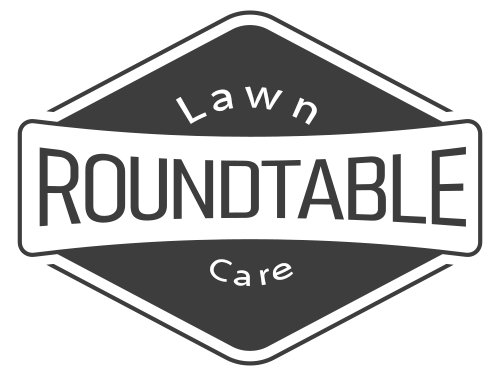A Comprehensive Guide to Creating an Enchanting Lawn in the Willamette Valley

Nestled between the Coastal Range and Cascade Mountains, the Willamette Valley is an exquisite region adorned with vibrant landscapes and thriving flora. Its temperate climate, characterized by mild winters and warm, dry summers, fosters a unique environment where lawns flourish.
Unleash the potential of your Willamette Valley lawn with our expert guide to selecting the finest grass seeds, preparing the perfect seedbed, sowing for success, and nurturing your lawn to perfection. We’ll delve into the secrets of irrigation, mowing, and fertilization, empowering you to elevate your outdoor oasis to unprecedented heights.
Embark on this horticultural journey to transform your lawn into a lush, verdant sanctuary, a captivating spectacle that will be the envy of your neighborhood. Savor the joy of a lawn that not only beautifies your surroundings but also provides a tranquil haven for relaxation and outdoor enjoyment.
Key Insights
- The Willamette Valley’s climate is ideal for growing a variety of grass seed varieties.
- It is important to select the right grass seed variety for your specific needs and microclimate.
- Preparing the soil properly is essential for ensuring optimal germination and growth.
- Proper watering, mowing, and fertilization are all essential for maintaining a healthy, beautiful lawn.
- Fertilizing your lawn regularly will help to keep it healthy and looking its best.
1. Unveiling the Wonders of Willamette Valley Lawns
Nestled between the Coastal Range and Cascade Mountains, the Willamette Valley is an exquisite region adorned with vibrant landscapes and thriving flora. Its temperate climate, characterized by mild winters and warm, dry summers, fosters a unique environment where lawns flourish.
The Willamette Valley’s exceptional climate provides ideal conditions for growing a variety of grass species, making it possible to create a lawn that is both beautiful and resilient. The key to success lies in selecting the right grass seed for your specific needs and microclimate. Whether you prefer the fine-textured elegance of fescues or the durability and low-maintenance nature of ryegrasses, there is a grass seed that will thrive in the Willamette Valley.
Once you have selected the perfect grass seed, it is important to prepare the soil properly to ensure optimal germination and growth. This includes testing the soil to determine its pH level and nutrient content, and amending it as necessary. Proper soil preparation will give your lawn a strong foundation and help it to withstand the rigors of the Willamette Valley climate.
2. Selecting the Elite: Premium Grass Seed Varieties
When selecting grass seed for your Willamette Valley lawn, it is important to choose a variety that is well-suited to the region’s unique climate and soil conditions. Some of the most popular and successful grass seed varieties for the Willamette Valley include:
-
Fine-leaf fescues: Fine-leaf fescues are known for their durability, drought tolerance, and low maintenance requirements. They are also shade tolerant, making them a good choice for areas that receive less sunlight.
-
Tall fescues: Tall fescues are another durable and drought-tolerant grass seed variety. They have a wider leaf blade than fine-leaf fescues, and they can tolerate more wear and tear.
-
Perennial ryegrasses: Perennial ryegrasses are known for their quick germination and rapid growth rate. They are also very tolerant of wear and tear, making them a good choice for high-traffic areas.
-
Kentucky bluegrass: Kentucky bluegrass is a popular choice for lawns in the Willamette Valley because of its beautiful dark green color and fine texture. However, it requires more water and maintenance than other grass seed varieties.
Once you have selected the perfect grass seed variety for your lawn, it is important to purchase high-quality seed from a reputable supplier. This will help to ensure that your lawn is healthy and beautiful for years to come.
3. Preparing the Perfect Canvas: Soil Preparation
Before you sow your grass seed, it is important to prepare the soil to ensure that it is in optimal condition for germination and growth. This includes testing the soil to determine its pH level and nutrient content, and amending it as necessary.
Soil testing: Soil testing is the best way to determine the pH level and nutrient content of your soil. You can purchase a soil test kit from your local garden center or nursery, or you can send a sample of your soil to a professional laboratory for testing.
pH balancing: The pH level of your soil is a measure of its acidity or alkalinity. Most grasses prefer a pH level between 6.0 and 7.0. If your soil is too acidic, you can add lime to raise the pH level. If your soil is too alkaline, you can add sulfur to lower the pH level.
Nutrient enrichment: Grass seed needs a variety of nutrients to germinate and grow, including nitrogen, phosphorus, and potassium. If your soil is deficient in any of these nutrients, you can add fertilizer to amend it.
Once you have prepared the soil, you are ready to sow your grass seed. Be sure to follow the instructions on the seed packet carefully, and water the seedbed regularly to keep the soil moist. With proper care, your grass seed will germinate and grow into a beautiful, healthy lawn.
4. Sowing Success: Techniques for Flawless Germination
Once you have prepared the soil, it is time to sow the grass seed. The best time to sow grass seed in the Willamette Valley is in the fall or early spring, when the weather is cool and moist.
There are two main methods of sowing grass seed: broadcasting and drilling. Broadcasting is the most common method, and it involves simply scattering the seed over the prepared soil. Drilling is a more precise method, and it involves using a seed drill to plant the seed at a specific depth in the soil.
No matter which method you choose, it is important to ensure that the seed is in good contact with the soil. This will help to ensure that the seed germinates and grows properly.
Once you have sown the seed, water the seedbed gently to keep the soil moist. Be careful not to overwater, as this can wash away the seed.
With proper care, your grass seed will germinate and grow into a beautiful, healthy lawn.
5. Water Wisely: Irrigation Strategies
Watering your lawn properly is essential for its health and appearance. The Willamette Valley’s climate is generally mild, but it can experience periods of drought, so it is important to water your lawn regularly, especially during the summer months.
The best time to water your lawn is early in the morning, before the sun gets too hot. This will help to prevent the water from evaporating too quickly. You should water your lawn deeply and infrequently, rather than shallowly and frequently. This will encourage the roots of the grass to grow deep into the soil, making your lawn more drought tolerant.
The amount of water you need to apply will vary depending on the type of soil you have, the weather conditions, and the slope of your lawn. A good rule of thumb is to apply about 1 inch of water per week. You can use a rain gauge to measure how much water you are applying.
If you are not sure how often to water your lawn, you can check the soil moisture by sticking your finger in the ground. If the soil is dry down to your first knuckle, it is time to water your lawn.
6. Mowing Mastery: Techniques for a Pristine Lawn
Mowing your lawn properly is essential for its health and appearance. The optimal mowing height for a Willamette Valley lawn is between 2.5 and 3 inches. This will help to keep your lawn healthy and prevent it from becoming too dry or too wet.
You should mow your lawn regularly, especially during the growing season. The frequency of mowing will vary depending on the type of grass you have and the weather conditions. A good rule of thumb is to mow your lawn when it reaches a height of about 3.5 inches.
When you mow your lawn, be sure to use a sharp blade. A dull blade will tear the grass, making it more susceptible to disease and pests. You should also mow your lawn in different directions each time to prevent ruts from forming.
Mowing your lawn properly will help to keep it healthy and looking its best. It will also help to reduce the amount of time you spend weeding and watering your lawn.
7. Fertilization Fundamentals: Nourishing Your Lawn’s Vitality
Fertilizing your lawn is essential for keeping it healthy and looking its best. The best time to fertilize your lawn is in the spring and fall, when the grass is actively growing. You should use a fertilizer that is specifically designed for lawns, and you should follow the instructions on the package carefully.
There are two main types of fertilizers: organic and inorganic. Organic fertilizers are made from natural materials, such as compost and manure. Inorganic fertilizers are made from synthetic materials. Both types of fertilizers can be effective, but organic fertilizers are generally more environmentally friendly.
When you fertilize your lawn, it is important to apply the fertilizer evenly. You can use a fertilizer spreader to help you do this. You should also water your lawn after you fertilize it to help the fertilizer penetrate the soil.
Fertilizing your lawn regularly will help to keep it healthy and looking its best. It will also help to reduce the amount of time you spend weeding and watering your lawn.
What is the best time to sow grass seed in the Willamette Valley?
The best time to sow grass seed in the Willamette Valley is in the fall or early spring, when the weather is cool and moist.
How often should I water my lawn?
You should water your lawn deeply and infrequently, rather than shallowly and frequently. A good rule of thumb is to apply about 1 inch of water per week.
What is the optimal mowing height for a Willamette Valley lawn?
The optimal mowing height for a Willamette Valley lawn is between 2.5 and 3 inches.
When is the best time to fertilize my lawn?
The best time to fertilize your lawn is in the spring and fall, when the grass is actively growing.
Key Insights
| Key Insight | Description | |—|—|—| | The Willamette Valley’s climate is ideal for growing a variety of grass seed varieties. | The Willamette Valley’s climate is characterized by mild winters and warm, dry summers, which is ideal for growing a variety of grass seed varieties. | | It is important to select the right grass seed variety for your specific needs and microclimate. | Different grass seed varieties have different characteristics and are better suited to different climates and conditions. It is important to select the right grass seed variety for your specific needs and microclimate to ensure a healthy, beautiful lawn. | | Preparing the soil properly is essential for ensuring optimal germination and growth. | Preparing the soil properly by testing the pH level and nutrient content, and amending it as necessary, will ensure optimal germination and growth of your grass seed. | | Proper watering, mowing, and fertilization are all essential for maintaining a healthy, beautiful lawn. | Watering, mowing, and fertilizing your lawn properly are all essential for maintaining a healthy, beautiful lawn. | | Fertilizing your lawn regularly will help to keep it healthy and looking its best. | Fertilizing your lawn regularly will help to keep it healthy and looking its best by providing it with the nutrients it needs to grow strong and lush. |
